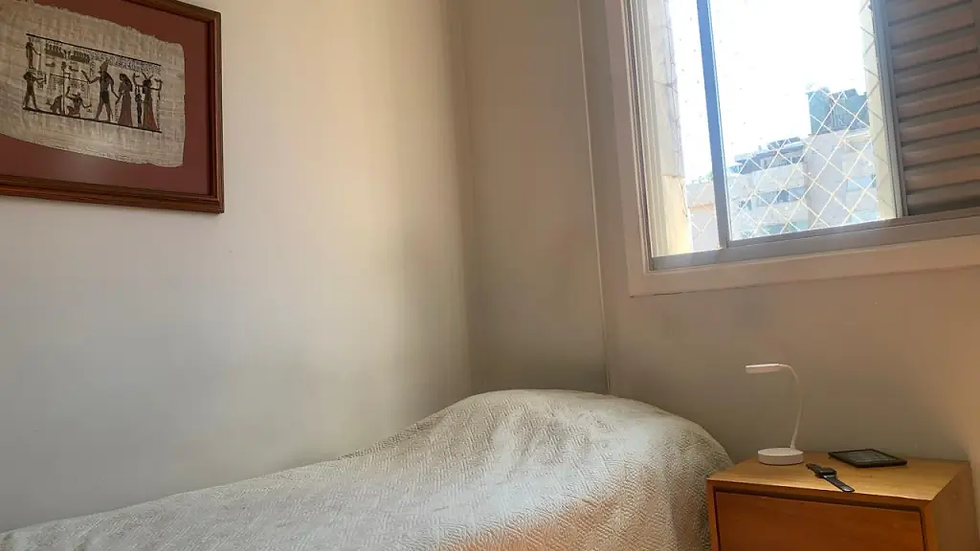The Bed
- Marco Aurelio GV
- Jul 20
- 4 min read
The other day, before getting out of bed and still caught in the whirlwind of my thoughts, I was wondering what new theme I should write about on my blogs. Suddenly, I realized that the idea was closer than I imagined! I was going to write about the bed. Yes! After writing about so many topics, how could I forget this oracle, where some good ideas pop up? So, I decided to write about the bed, and here is my tribute to it.
Have you ever said thanks to your bed?
We should be grateful for our beds because they’re where we experience the most intimate moments of our lives, literally, from beginning to end.
The bed has no rival, although we should also be thankful for the importance of other pieces of furniture, such as:
Chair: the perfect companion for temporary rest, meals, and—above all—generating ideas that may turn into essays like this one.
Table: a crucial support for one of the most important parts of our lives: eating. It also brings family and friends together for conversation or even prayer. It’s where we study and play, among other things.
Sofa: a kind of hybrid—part bed, part chair. Usually with cushions to boost comfort.
But here is the catch: nothing beats the bed!
Ah, the bed! It’s where we spend a good chunk of time after we’re born. It’s where the sublime act of love happens. It’s where we cry, laugh, dream, reflect, and ultimately say goodbye to life, which is, by the why, sadly called the “deathbed.”
Additionally, the bed can be a “splendid cradle” or even a “golden cradle,” depending on context. Regardless, it’s in bed that our body and mind recharge.
The bed is more than just a piece of furniture!
The bed was the brainchild of someone who wanted not just to make the body more comfortable, but also to reinvigorate it, like a “battery charger.” The oldest beds are over 70,000 years old, made from leaves and grass on stones back in the cave days. Over millennia, we’ve refined the bed’s design and introduced new concepts: cradles, hammocks, futons, canopies, and many others.
Despite all its variations, the bed’s primary purpose hasn’t changed: to recalibrate the body and mind, which, in truth, often leaves the body to travel through dream worlds or, as many claim, to the so-called "astral plane".
Beds can be made of wood, plastic, glass, or steel, and mattresses might be filled with straw (in ancient times), springs, foam, or even water. And anyone who says beds are only for sleeping is mistaken, far from it. It’s also where we experience the absence of sleep, yes, insomnia.
But there’s some good news about insomnia: it allows daydreams and gives our imagination space to roam. It’s also a moment for reflection on what we did well that day and what we could improve. So yes, “some insomnias come for the better.” Agree with me?
Beds also reveal other truths: like it or not, the sick often remain in bed, if conscious, reflecting on their condition. And yes, it’s also in bed where many draw their final breath. Tragic, I know—but since we’re mortal, and setting aside any masochism, it’s better to “go” in bed than outside it.
What if our beds could speak and reveal our secrets?

Can you imagine how many secrets the bed would know about us?
How many life plans, relationships, and paradoxical emotions has it witnessed and shared with you? Not to mention that the bed is indeed our longest relationship! Yes, it is! Did you know we spend about a third of our lives in bed? That means if you live to 90, you’ll have spent 30 years lying in bed, thinking, waiting, fearing, resting, mulling, sad, happy, anxious, and hopeful.
You know what? The bed isn’t a luxury. It’s an existential necessity!
That’s exactly why it’s different from any other object. It knows us in our most intimate moments, without masks, titles, or pretense. Just us: raw and real.
The bed is everywhere in life!
The bed shows up in nearly every life stage—in theater, film, and books. It was in bed that Don Quixote dreamed of his knighthood, and where Sleeping Beauty lay until kissed by a prince. Red Riding Hood’s grandmother? She was eaten while lying in bed.
In bed, you literally “sleep on the problem”!
That’s the advice we often get when facing a tricky issue that can't be solved while awake, because the bed is the ideal space for decisions to arise, undisturbed. And there’s more: “sleeping on it” is even easier with a bit of background music, maybe classical or your favorite jazz. Any genre works. It’s your call after all, dude!
In short, inspiration flows effortlessly when you’re in a horizontal position. Your body relaxes, your muscles release tension, and your heart returns to a gentle rhythm, ideal for pondering whatever’s still unresolved.




Comments